Actor Humphrey Bogart became a legend for his roles in 1940s-era films like Casablanca, The Maltese Falcon and To Have and Have Not.
Synopsis 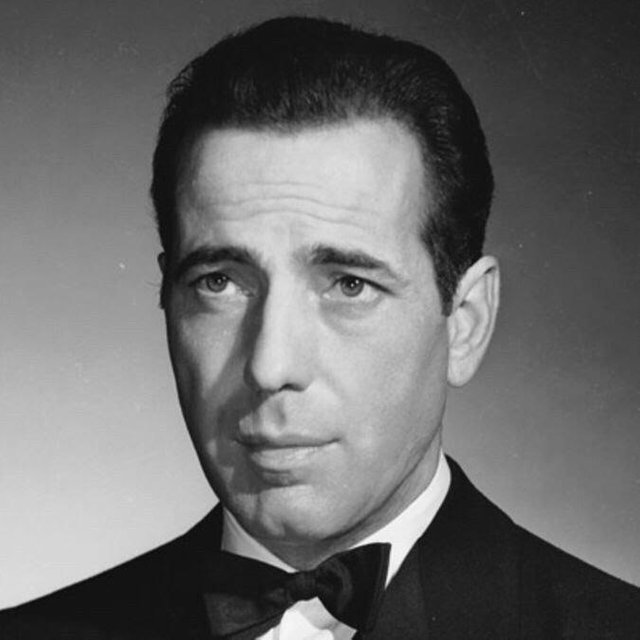
Humphrey Bogart was born on December 25, 1899, in New York City. He began his career on Broadway in the 1920s. This led to B-movie parts in 1930s Hollywood. Bogart's turning point came in the 1940s, with his legendary roles in The Maltese Falcon and Casablanca. He married several times throughout his life, with his last wife being actress Lauren Bacall. He died in 1957 at the age of 57 to esophageal cancer.
Childhood
Hailed by many as the greatest male movie star of all time, Humphrey Bogart was born in New York on December 25, 1899. Bogart, whose surname comes from the Dutch for "keeper of an orchard," was born into a wealthy and prominent New York family, descended directly from New York's first Dutch colonial settlers. His father, Belmont DeForest Bogart, was a respected and socially prominent heart surgeon. His mother, Maud Humphrey, was an accomplished painter and artistic director of The Delineator, a woman's fashion magazine. One of her drawings of Humphrey Bogart as a baby was used in a national advertising campaign for Mellin's baby food and briefly turned the infant Bogart into a national sensation.
Bogart later recalled, "There was a period in American history when you couldn't pick up a goddamned magazine without seeing my kisser in it." Although she would paint young Humphrey many times throughout his childhood, Maud Bogart was by all accounts an intense, work-obsessed woman who was never especially close to or fond of her son. As Bogart himself put it, "If, when I was grown up, I [had] sent my mother one of those Mother's Day telegrams or said it with flowers, she would have returned the wire and flowers to me, collect."
The Bogarts owned a summer retreat on Canandaigua Lake, one of the most beautiful of the "finger lakes" in upstate New York, and it was there that Bogart passed his happiest days as a child. He spent his summers at Canandaigua playing chess and sailing, both lifelong hobbies that occasionally bordered on obsessions. Bogart attended the prestigious and socially elite Trinity School in New York City, where he was a disinterested and poor student.
His bad grades, his effeminate name, the overly ceremonial clothes his mother made him wear and his ineptitude for sports made Bogart the frequent butt of his classmates' jokes. One recalled, "Bogart never came out for anything. He wasn't a very good student ... He added up to nothing in our class."
Despite his poor performance in school, in 1917 Bogart's parents decided to send him to Philips Academy in Andover, Massachusetts—the rigorous and storied private boarding school where John Adams had once served as headmaster. Predictably, Bogart failed to meet the school's high academic standards and was expelled in May of the next year.
Enlisted Life 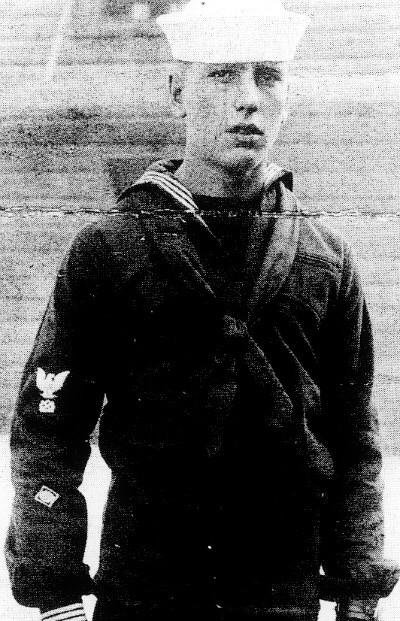
Young, restless and unsure what to make of his life, Bogart enlisted in the United States Navy, only weeks after his dismissal from school, to fight in World War I. He recalled his thinking at the time: "War was great stuff. Paris! French girls! Hot damn! ... The war was a big joke. Death? What does death mean to a kid of 17?" Perhaps the most notable occurrence of Humphrey's naval service was a scar he acquired above the right corner of his upper lip that would later become the defining feature of his tough guy appearance.
Although accounts vary, the most widely accepted story is that Bogart received the scar while escorting a handcuffed prisoner. The prisoner asked him for a cigarette, and when Humphrey reached into his pocket for a match, the prisoner smashed him in the face with his handcuffs and attempted, unsuccessfully, to flee.
Bogart was honorably discharged from the navy in 1919 and once again faced the question of what to make of his life. A year later, he met a stage actress named Alice Brady who landed him a job as the company manger of a touring production of The Ruined Lady.
A year later, in 1921, he made his stage debut as a Japanese waiter in a production of a play called Drifting. Bogart's one line, uttered in his best attempt at a Japanese accent, was "Drinks for my lady and for her most honored guests." Despite his son's miniscule role, upon seeing the show for the first time Bogart's father leaned over and whispered to the person next to him, "The boy's good, isn't he?"
Hollywood Career 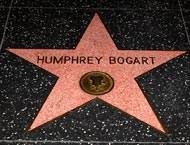
That little taste of life on stage was enough for Bogart to resolve to become an actor, and for more than a decade he struggled to get his acting career off the ground, landing only minor roles in shows such as Nerves and The Skyrocket. Then, in 1934, Bogart finally delivered his breakthrough performance in Robert Sherwood's The Petrified Forest. He portrayed Duke Mantee, an escaped killer, and so fully embodied the role of the villain—stooped posture, dangling hands, dead stare—that the audience reportedly let out a gasp of horror the first time he walked on stage.
After delivering an equally riveting performance in the film adaptation of The Petrified Forest two years later, Bogart carved out a niche as one of Hollywood's go-to actors to play criminals. His early gangster and crime films included The Great O'Malley (1937), Dead End (1937), Crime School (1938) and King of the Underworld (1939).
Bogart felt limited playing such similar roles in film after film. He managed to break free from typecasting with his portrayal of the smooth, cunning and honorable private eye Sam Spade in the 1941 film noir masterpiece The Maltese Falcon. As it turned out, the film allowed Bogart to prove his versatility as an actor just in time to be cast in the leading role in the 1942 war romance Casablanca. Bogart played Rick Blaine, an American expatriate struggling to rekindle his relationship with his Norwegian lover (Ingrid Bergman) in the midst of World War II. Casablanca won three Academy Awards (Best Picture, Best Screenplay, Best Director) and is now ranked among the greatest films of all time. Also one of the most quotable films of all time, Casablanca ends with the unforgettable words, spoken by Bogart, "I think this is the beginning of a beautiful friendship."
One of Hollywood's most popular actors in the wake of Casablanca, Bogart continued on to a long and distinguished Hollywood career that included over 80 films. His most celebrated performance after Casablanca came in the 1951 film The African Queen, in which he co-starred with Katharine Hepburn and for which he won his first and only Academy Award for Best Actor. Bogart said after receiving the award, "The best way to survive an Oscar is to never try to win another one. You've seen what happens to some Oscar winners. They spend the rest of their lives turning down scripts while searching for the great role to win another one. Hell, I hope I'm never even nominated again. It's meat-and-potato roles for me from now on." His most notable later films included The Caine Mutiny (1954), Sabrina (1954) and The Harder They Fall (1956).
Final Years 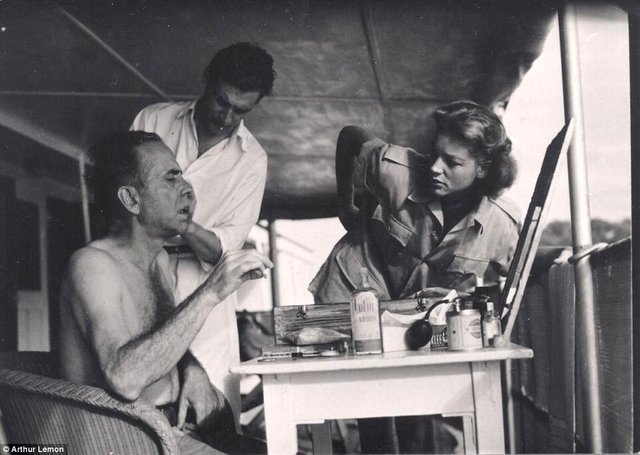
In 1956, while still in the prime of his career, Bogart was diagnosed with esophageal cancer. Surgery failed to remove the cancerous growth, and Bogart died on January 14, 1957. He was 57 years old.
While Humphrey Bogart was already one of the top movie stars in the country at the time of his death, his acclaim has grown enormously in the decades since his passing. Called "the Bogart Boom" in reference to the title of a series of Playboy articles chronicling the phenomenon, during the 1960s Bogart's films became the objects of superlative critical praise and his personality the object of cultish adulation. Both because of and despite his cavalierly anti-Hollywood persona, Bogart remains timelessly cool in a way few celebrities have ever been able to achieve.
In 1997, Entertainment Weekly named him "the number one movie legend of all time"; in 1999, the American Film Institute ranked him the greatest male movie star of all time. Bogart's friend and biographer, Nathaniel Benchley, summed up the actor's life: "[Bogart] achieved class through his integrity and his devotion to what he thought was right. He believed in being direct, simple, and honest, all on his own terms, and this ruffled some people and endeared him to others."
Personal Life
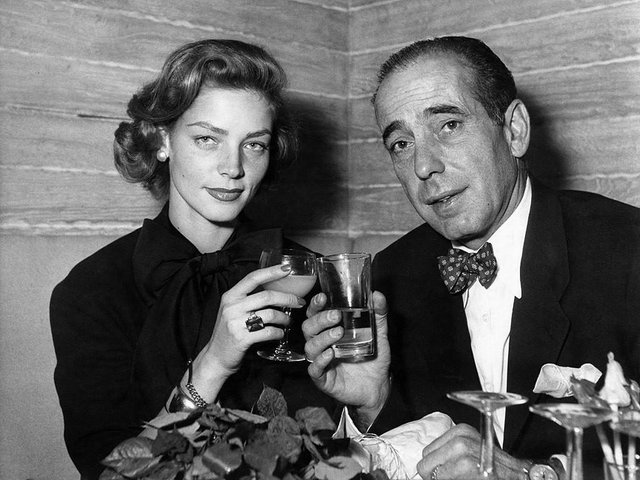
Humphrey Bogart was married four times during his life. He married his first wife, Helen Menken, in 1926. They divorced after less than a year of marriage, and in 1928 Bogart married another actress, Mary Philips. Their marriage also dissolved when Bogart made the move from New York to Hollywood, and in 1938 Bogart married his third wife, Mayo Methot.
Theirs was a tumultuous and fiery union—they were known in Hollywood as the "Battling Bogarts"—until they too divorced in 1945. Less than two weeks after his divorce from Methot, Bogart married Betty Perske, better known as Lauren Bacall, his young and extraordinarily beautiful costar in To Have and Have Not. They had two children together, a son Stephen and a daughter Leslie. Bogart and Bacall remained together until his death.
Hi! I am a robot. I just upvoted you! I found similar content that readers might be interested in:
https://www.biography.com/people/humphrey-bogart-9217486
Downvoting a post can decrease pending rewards and make it less visible. Common reasons:
Submit